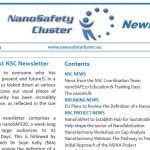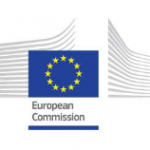 >
News
>
News
What do EU citizens think about nanomaterials?

A recent surveyfrom the European Union Observatory for Nanomaterials (EUON) carried out in five selected EU countries shows that citizens demand better labelling of everyday products containing nanomaterials and increased awareness of the risks and benefits of products containing nanomaterials. Read the results on the website of EUON: https://euon.echa.europa.eu/view-article/-/journal_content/title/what-do-eu-citizens-think-about-nanomaterials
Read moreWinter Edition of the NanoSafetyCluster Newsletter now available for download

News from nanosafety research at national and European level can be found in a compact summary in the current winter issue of the NanoSafetyCluster Newsletter 12/2020. You can download the document from the NanoSafetyCluster website at www.nanosafetycluster.eu/outputs/nsc-newsletter/
Read moreNanoFabNet Survey – Nanotechnology Experts on “Validation & Standardisation of Sustainable Nanofabrication”

In the field of nanotechnology, the development of new materials, processes and applications is advancing rapidly. It is even more important that this development is based on solid and safe processes that lead to trustworthy results. The validation of these technologies, a harmonization across different development areas in a suitable standardization framework play a major […]
Read moreEU regulation – nano in safety data sheets

COMMISSION REGULATION (EU) 2020/878 of 18 June 2020 Amending Annex II to Regulation (EC) No 1907/2006 of the European Parliament and of the Council on the Registration, Evaluation, Authorisation and Restriction of Chemicals (REACH) … Regulation (EU) 2018/1881 introduces specific requirements for substances with nanoforms … From the REQUIREMENTS FOR THE PRODUCTION OF […]
Read moreTRGS 527 Activities with nanomaterials

The German Federal Institute for Occupational Safety and Health (BAuA) publishes Technical Rule for Hazardous Substances on activities involving nanomaterials. The Technical Rules for Hazardous Substances (TRGS) reflect the state of technology, occu-pational medicine and occupational hygiene as well as other verified scientific knowledge for activities involving hazardous substances including their classification and labelling. […]
Read more